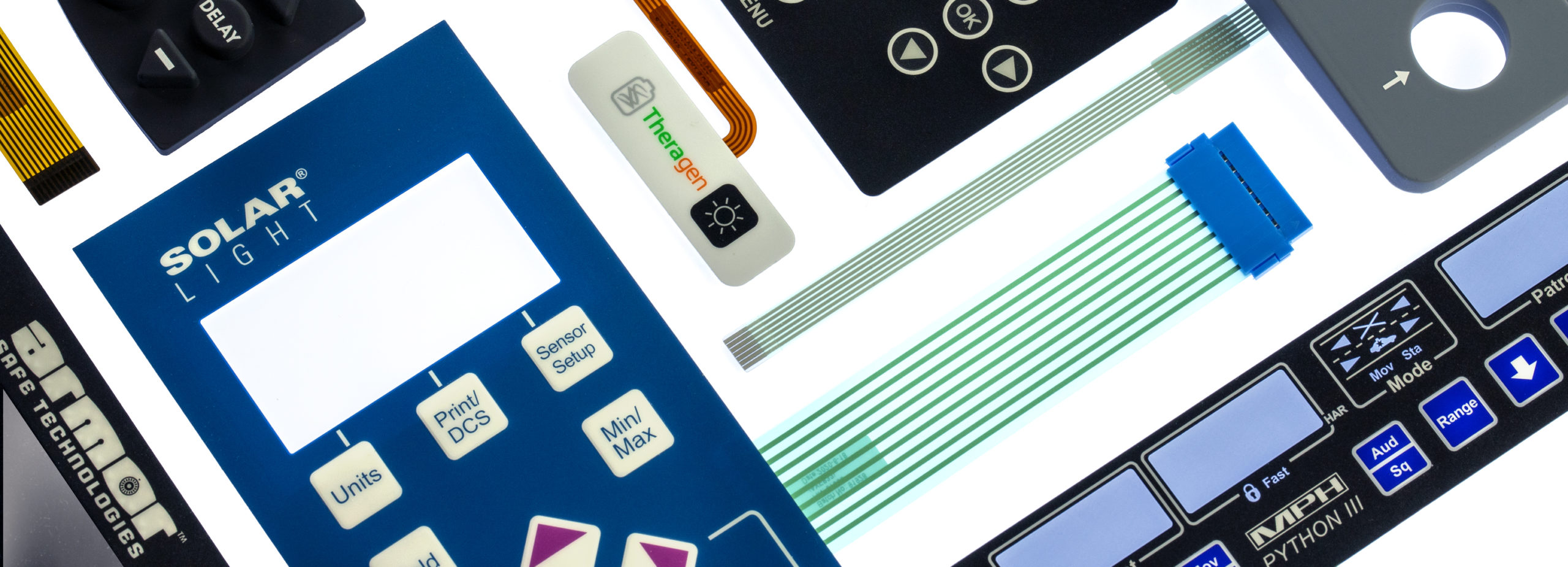Exploring the Manufacturing Process of Durable Membrane Switches
Exploring the Manufacturing Process of Durable Membrane Switches
Blog Article
Why Membrane Layer Changes Are Essential for Sturdy Control Solution
Membrane buttons play a critical function in guaranteeing the toughness and reliability of control systems throughout numerous markets. As we explore the diverse benefits of membrane layer buttons, it becomes evident that their relevance goes beyond mere performance, influencing customer experience and operational efficiency.
Overview of Membrane Layer Buttons
Membrane layer switches are functional and trusted parts commonly utilized in various electronic control systems. These buttons contain a number of layers, including a visuals overlay, a spacer layer, and a published circuit layer. The visuals overlay provides both practical and aesthetic style, while the spacer layer makes sure that the switches are activated just when pushed. The printed circuit layer consists of conductive traces that finish an electrical circuit when the membrane is pushed, making it possible for the device to react to user inputs.
Membrane layer buttons are frequently preferred in applications calling for a portable and light-weight design, making them excellent for portable gadgets, clinical equipment, and commercial machinery. They can be customized to satisfy certain customer demands and can integrate different functions such as backlighting, responsive feedback, and numerous shades. Membrane switches are immune to dirt, dampness, and impurities, making them suitable for settings where sturdiness is vital.
Advantages of Longevity
In numerous applications, the durability of membrane layer switches over deals substantial advantages that enhance their overall performance and reliability. These buttons are made to endure rough environments, making them excellent for usage sought after problems such as high humidity, extreme temperature levels, and exposure to chemicals. Their durable building assists to prevent damage from physical impact, ensuring resilient capability and reducing the need for constant substitutes.
Additionally, membrane layer switches are immune to damage, which is critical in applications where constant interaction happens. This durability translates to decrease maintenance costs, as companies profit from minimized downtime and less solution disturbances. The encapsulated design of membrane switches over shields internal components from dust and dampness access, additional contributing to their lifespan (membrane switch).
An additional advantage is their capacity to maintain constant efficiency gradually. With a high tolerance for mechanical stress, these switches preserve their responsive responses and electrical stability, making certain customer contentment. Eventually, the resilience of membrane layer changes not just improves operational performance but also fosters confidence in their integrity, making them a preferred selection for control systems across different sectors.
Applications in Different Industries
Durable control systems using membrane switches discover extensive applications throughout a variety of industries, each gaining from the one-of-a-kind qualities these switches offer. In the medical sector, membrane layer switches are crucial for tools such as individual screens and analysis equipment, where dependability and ease of cleansing are critical. Their resistance to moisture and pollutants ensures they maintain functionality in clean and sterile environments.
The More Bonuses auto industry leverages membrane switches for dashboard controls and infotainment systems, where they supply sleek, inconspicuous user interfaces that improve user experience. These buttons are also designed to hold up against severe conditions, including direct exposure to severe temperatures and resonances.
In industrial setups, membrane switches are commonly utilized in machinery control board, offering responsive comments and longevity essential for high-usage applications. Their capability to resist chemicals makes them ideal for producing settings where spills and pollutants are constant.

Customer electronics, such as kitchen area appliances and remotes, likewise use membrane layer buttons for their convenience and cost-effectiveness. Overall, the adaptability and durable nature of membrane layer switches over make them essential throughout numerous industries, making certain effective operation and longevity in control systems.
Style and Visual Charm
While performance is paramount, the design and visual appeal of control systems furnished with membrane layer switches play an essential function in customer involvement and total experience (membrane switch). The visual design of these buttons can substantially influence individual assumption and interaction. A well-designed membrane layer button boosts the beauty of the tool, making it much more attractive to users and cultivating a connection in between the customer and the product
Membrane layer switches provide a lot of adaptability in design, permitting makers to tailor graphics, shades, and textures to straighten with brand identification and item appearances. Making use of lively colors and distinctive patterns can attract interest, while responsive responses can enhance the individual's interaction with the device. Additionally, the capability to integrate LED signs and backlighting into the membrane layer button design offers both useful and visual benefits, improving exposure and usability in numerous atmospheres.

Enhancing Individual Experience

In addition, membrane buttons can be personalized to incorporate graphical interfaces, enhancing functionality by presenting info in a clear and user-friendly manner (membrane switch). This personalization can consist of symbols, labels, and shade coding that guide individuals via complex capabilities with simplicity. Additionally, their flexibility allows for integration in different settings, guaranteeing regular performance whether in commercial machinery or customer electronics
The toughness of membrane buttons likewise plays an essential role in individual experience. By holding up against severe conditions and expanded usage, these switches minimize the likelihood of system failures, thus promoting reliability and individual confidence. Ultimately, the critical use of membrane switches over not only boosts performance however additionally considerably enriches customer interaction with control systems, making them an essential part in modern style.
Conclusion

Report this page